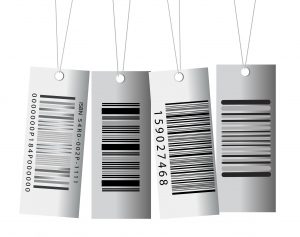California’s track-and-trace system slowly spreading through marijuana supply chain, but hiccups remain
5 min read
The marijuana inventory tracking system for the world’s largest cannabis market – California – isn’t fully online, despite its rollout in January. But it’s getting there.
The slow transition to the new system involved confusion, headaches and extra costs, industry watchers note, reinforcing that legalization has brought with it a new world of red tape.
“Track-and-trace is like going to the dentist. You don’t want to do it, but you have to,” quipped Terra Carver, executive director of the Humboldt County Growers Alliance.
By and large, California’s marijuana companies are dealing successfully with the daily logistics of reporting product inventory to the state through the California Cannabis Track-and-Trace system (CCTT). It is powered by Metrc, made by Florida-based Franwell.
But the system continues to prove effectively symbolic in many ways, several industry experts said, because not every legal company has started using it – only those with provisional or annual licenses, in contrast to the temporary business permits under which the entire industry operated throughout 2018.
That means there isn’t complete accountability to regulators for every legal product that makes its way through the supply chain.
As a result, many that are forced to use the system also don’t really see the point, aside from it being another state mandate.
“It’s a patchwork,” said Josh Drayton, communications director for the California Cannabis Industry Association.
“We’re not seeing it work its way all the way through the supply chain. Which ultimately means it’s kind of a broken system at the moment,” Drayton added.
“It’s not giving us the data that everyone is looking to see, which is: How are we competing against the illicit market, and are products being diverted?”
Latest numbers
Three California agencies have been busy for months processing annual license applications, and they have been granting provisional permits to many applicants so they can continue operating legally while awaiting their annuals. All temporary permits will expire by the end of July.
When a business gets its provisional license, it’s required to start the process of getting on CCTT. That’s complicated enough, so many companies hired full-time staff to navigate the system.
As of July 26, the California Department of Food and Agriculture (CDFA), which oversees growers, had issued 231 annual marijuana cultivation licenses and 1,753 provisional permits, with another 662 approved but waiting for fee payment, and another 2,613 that are still in the process.
There are still 602 active temporary licenses, and the agency didn’t have any projections around how many annual or provisional licenses will be in place at that point or by the end of the year. A CDFA spokeswoman also declined to say how many growers are already uploading data into CCTT, noting that such information is confidential.
The Department of Public Health, which licenses only MJ manufacturers, has issued 711 annual or provisional licenses to date, of which about 300 are already uploading data into CCTT, an agency spokesman confirmed.
The agency still has 140 active temporary licenses and estimated that there will be roughly 900 provisional or annual licenses by the end of July.
The Bureau of Cannabis Control (BCC), which oversees all other MJ business types, has issued 43 annual permits, another 1,011 provisional permits and still has 1,355 active temporary permits.
There also are another 768 provisionals or annuals that are approved but awaiting fee payment. BCC chief Lori Ajax said recently that her top priority is getting all temporary licenses transitioned to at least provisionals – if not annuals – so they won’t have to suspend operations.
Difficulties abound
One of the more common complaints about CCTT is from retailers who – because they’ve received provisional or annual licenses – must have unique identifier tags on all products.
But that’s created a chicken-before-the-egg situation, because a lot of growers and manufacturers aren’t yet operating on the same required system. So, product often still shows up at retail locations without those tags.
Therefore, retailers must order tags themselves and sticker all products, which means extra labor costs.
“I’m imagining everyone coming in after-hours and sitting around stickering things. We’re going to have to pay for overtime,” said Monica Gray, CEO of San Rafael-based Nice Guys Delivery.
Gray recently took the CCTT/Metrc training course and ordered the tags she needs, which she estimated will be about 80% of her inventory.
Plenty of other issues exist as well, said Juli Crockett, director of compliance with Los Angeles-based MMLG Consulting.
For instance, she noted there’s one point-of-sale software system used by retailers that isn’t set up to interface properly with CCTT, or account for the lack of data from supply-chain points of origin, such as cultivators or manufacturers still operating on temporary licenses.
That’s forcing some retailers on that software system to literally invent information just to get to the next step with CCTT, Crockett said.
“You have people who are having to generate false information just to get their stuff in the (CCTT) system,” Crockett said. “In order to make the data exist, you’re having to create a backstory that is fictitious.”
A central issue, Crockett and others said, is that the underlying program that supports the inventory tracking system, Metrc, wasn’t designed with California’s complicated supply chain in mind. It’s more in line with simpler state systems such as Colorado’s, which doesn’t require mandatory distribution, for instance.
Franwell, the company that owns Metrc, did not respond to a request for comment.
There’s also a disconnect in many ways between what the state requires and how CCTT and Metrc actually work, said Graham Farrar, CEO of Glass House Farms in Santa Barbara County.
That’s led to, for instance, cultivators having to weigh plants individually as opposed to larger batches, which is costing growers more time and money.
“One of the things we’d really like to do is see them reconcile the (state) regulations and the mandate … so we’re not throwing away hours and hours of labor every day,” Farrar said.
But, overall, most in the industry agreed that the CCTT system will stabilize and eventually prove useful.
At the moment, however, it’s more growing pains for cannabis businesses.
John Schroyer can be reached at [email protected]







